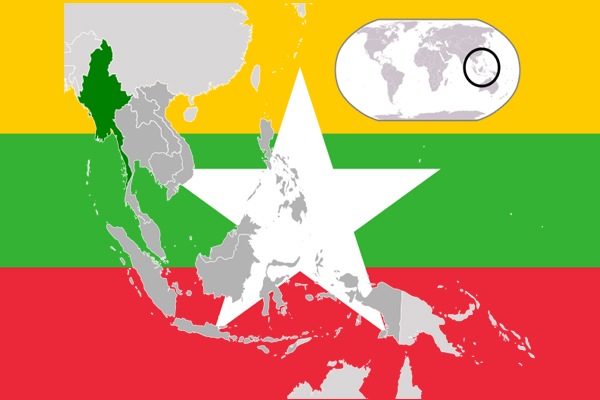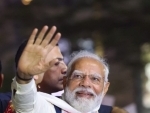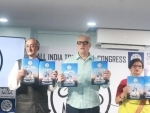
Borders of Terror
In terms of fatalities, this is the worst single attack targeting Security Forces (SFs) in the entire Northeast region since 1982. On February 19, 1982, a convoy carrying soldiers was ambushed by Nationalist Socialist Council of Nagaland (NSCN) cadres near Namthilok in the Ukhrul District of Manipur, and 20 troopers and one civilian contractor were killed. According to the South Asia Terrorism Portal (SATP) database, which has tracked insurgency in the region since March 2000, the worst attack to precede the June 4, 2015, massacre, was on August 20, 2002, when National Liberation Front of Tripura (NLFT)-Nayanbashi Jamatiya terrorists killed 20 Tripura State Rifles troopers and injured another four in an ambush at Hirapur in the West Tripura District of Tripura.
The June 4 attack was, nevertheless, the worst ever attack in the India-Myanmar border Districts since March 2000. In another major attack, on May 24, 2002, at least 11 Assam Rifles personnel were killed in an ambush by the cadres of the Isak Muivah faction of NSCN (NSCN-IM) and the Kuki Revolutionary Army in the Sanakeithel area under the Litan Police Station of Manipur's Ukhrul District, though this was far from the border.
Meanwhile, just about a month earlier, on May 3, 2015, twin ambushes by militants resulted in the death of eight SF personnel - seven of them from the 'C' company of 23 Assam Rifles (AR) and another from the 164 Naga Territorial Army (TA) Battalion - were engineered by the NSCN's Khaplang faction (NSCN-K) about three kilometres from Changlangshu village in the Tobu Subdivision, near the India-Myanmar border, in the Mon District of Nagaland. Another nine troopers were injured in the incident.
On April 2, 2015, three Army personnel of 4 Rajput Regiment were killed and another four injured when militants ambushed their vehicle at Tupi village, near the India-Myanmar border in the Tirap District of Arunachal Pradesh.
On February 6, 2015, two civilian porters were killed and nine AR troopers were injured in an IED blast at Monmao village, near the India-Myanmar border, in the Changlang District of Arunachal Pradesh. One of the injured AR trooper succumbed to his injuries a day later.
According to partial data compiled by the Institute for Conflict Management, between January 1, 2000 and June, 7 2015, there were at least 642 fatalities, including 116 civilians, 118 SF personnel and 408 militants, in 10 Districts, spread across four Northeast Indian States, along the India-Myanmar border. In terms of such fatalities, Chandel District is the worst affected, accounting for 295 fatalities (52 civilians, 57 SF personnel and 186 militants), followed by Churachandpur with 235 fatalities (60 civilians, 38 SF personnel and 137militants); Ukhrul, with 154 fatalities (39 civilians, 39 SF personnel and 77 militants). The other border Districts which witnessed fatalities include Mon (119), Tirap (72), Tuensang (44), Phek (32), Changlang (22), and Khipre and Longding, two each. There are 15 Districts along the India-Myanmar border in the region, including Phek, Tuensang, Mon and Khipre Districts in Nagaland; Tirap, Changlang, Anjaw and Longding in Arunachal Pradesh; Chandel, Ukhrul and Churachandpur Districts in Manipur; and Champhai, Serchhip, Lunglei and Chhimtuipui in Mizoram. Champhai, Serchhip, Lunglei, Anjaw and Chhimtuipui have not recorded any such fatality so far.
Meanwhile, the June 4 attack was claimed by the NSCN-K, Kanglei Yawol Kanna Lup (KYKL) and Kangleipak Communist Party (KCP). In a joint statement released on the day of the attack, these groups stated that the "combined team of Elite Strike Unit of Naga Army [NSCN-K], KYKL and KCP carried out the attack. The joint offensive has been launched in sync with each corresponding assertion for self-determination and sovereignty." According to some other reports, the 'commander-in-chief' of the Independent faction of the United Liberation Front of Asom (ULFA-I), Paresh Baruah, referring to the attack, called up local television channels saying that the ambush was carried out under orders from S.S. Khaplang, 'chairman' of the recently formed United Liberation Front of Western South East Asia (UNLF-WSEA).
NSCN-K had also claimed the May 3 and February 6 attacks. The April 2 attack remains unattributed, though NSCN-K is suspected to have been involved.
The June 4 incident was at least the third attack targeting SFs and involving NSCN-K, since March 27, 2015, when this rebel group unilaterally walked out of the 14 year-old ceasefire process.
Meanwhile, reports indicate that, after the ceasefire collapsed, about 400 cadres of NSCN-K have shifted base to Myanmar. Reports had earlier claimed that an estimated 2,000 militants from various groups operating in India's Northeast were stationed across the frontier in Myanmar. These militants mainly belonged to NSCN-K, ULFA-I, Kamatapur Liberation Organization (KLO), People's Revolutionary Party of Kangleipak (PREPAK), People's Liberation Army (PLA), United National Liberation Front (UNLF) and the IK Songbijit faction of National Democratic Front of Bodoland (NDFB-IKS). Indeed, reports indicated that Paresh Baruah was located in the Sagaing Division of Myanmar after he fled Bangladesh, subsequent to Prime Minister Sheikh Hasina Wajed's assumption of power in Bangladesh in 2009. A recent report that an ailing Khaplang was airlifted to Yangon deepened suspicions of official support to these groups. However, Union Minister of State for Home Affairs, Kiren Rijiju, asserted that the Myanmar and Bangladesh Government "do not have proper control in their territories, where the militant groups have set up their base camps". It is useful to note that despite the best effort of Sheikh Hasina Wajed Government in Bangladesh, at least 57 hideouts of these militant outfits still remain intact inside Bangladeshi territory.
The formation of UNLF-WSEA on April 17, 2015, bringing NSCN-K, ULFA-I, KLO and NDFB-IKS under a single banner, can only add to current concerns. Some reports suggest that another five groups, KCP, KYKL, PREPAK, PLA and UNLF, have also joined this new umbrella organisation. It is significant that efforts to unify the fragmented insurgencies of the Northeast date back many years, and the first reference of the newly-floated common platform can be traced back to a statement by Paresh Baruah on December 15, 2013, that, "More than 90 per cent of the work of forming the common platform has been completed and only the name of the platform has to be declared. We are hopeful of announcing the common platform shortly. Though the name of the platform is yet to be announced, the words 'west-south east Asia' would be included in the name."
A similar grouping of six militant outfits - KCP, KYKL, PREPAK, Progressive faction of PREPAK (PREPAK-PRO), PLA and UNLF - called; CorCom (Coordination Committee) has been operational in Manipur since its formation on July 8, 2011. CorCom as a group has been involved in at least 26 killings - three civilians, 16 SF personnel and seven militants - since its formation.
While the Sheikh Hasina Government's direct and open support in Bangladesh has helped India bring relative peace to the Northeast, the challenge of sustaining thegains of last few years has grown recently because of the clustering of all surviving Northeast militant formations in Myanmar and the support they receive from non-state groups there, as well as the possibility of some support from official quarters.
India's management of its borders has been consistently unsatisfactory, though circumstances and fortune have aided it in imposing a measure of rationality and control in some regions. The Indo-Myanmar border, unfortunately is not among these. Despite a boundary agreement dating back to 1967, which clearly delimited the borders, no physical demarcation has yet been established. As with other boundaries in the region, the border cuts through communities, families, villages, and even homes, and past attempts to fence certain sections have met with mass protests on both sides. A Free Movement Regime (FMR) allows resident tribals along the border to move up to 16 kilometres across the boundary without restrictions, and tribals are permitted to carry headloads across the border. These laws, intended to facilitate the natural interface of local communities, have been abused consistently by insurgents and smugglers, transforming this border into one of the major loci of drugs, weapons and human trafficking. The problem has been compounded significantly as a result of a tradition of diplomatic neglect which has left many rankling sores in the relation between Naypyidaw and New Delhi. While joint operations long in the past had secured some excellent results, more recently, Myanmarese authorities tend to look the other way as far as Indian insurgent group activities on their soil are concerned. An operation was purportedly launched by the Myanmar Army against Indian militant groups in March 2013, but the rebels were given ample warning, and nothing but the shells of their camps were located and destroyed. The diplomatic failure in this is incomprehensible, as Naypyidaw is far from hostile to India. Further, Myanmarese authorities exercise dubious control over some of the border regions. Despite a 'nationwide ceasefire agreement' between the Government and 16 armed groups, armed clashes continue between Government Forces and the Kachin Independence Army (KIA), the Myanmar National Democratic Alliance Army (MNDAA), the Ta'ang National Liberation Army (TNLA) and the Arakan Army, creating wide areas of disorder along the border.
Worse, India's approach to its own borders remains primitive, relying overwhelmingly on rudimentary and severely undermanned patrolling. On the Myanmar border, this occurs deep inside Indian Territory, leaving vast, unfenced spaces in dense forests entirely uncovered. In Manipur, roughly 46 battalions of the Assam Rifles are charged with both Counter Insurgency (CI) and border management - and less than 15 battalions are dedicated to the latter task along a topographically challenging 1,624 kilometer border. The policy framework has never ventured beyond crude Force management, and the development of local Forces and intelligence networks has been grossly neglected. There is little intelligence penetration and surveillance, and no directive to the overmanned local Police to monitor activities, beyond standard and deeply compromised crime control measures. According to National Crime Records Bureau (NCRB) data for 2013, Manipur has the highest Police Population Ratio, at 1,020 policemen per 100,000 population, as compared to an all India average of just 141. Virtually no attention has been directed to the demographic, social, political and administrative management of borders and the development of a permanent and intensive intelligence network.
The Army is now mounting a retaliatory operation against the perpetrator groups of the June 4 massacre. Crucially, the focus needs to be on a narrowly targeted intelligence based operation. Very recently such a targeted operation in Assam yielded good results in the aftermath of the December 2014 massacre of Adivasis, when the Army launched a major crackdown against NDFB-IKS. After suffering major losses, the NDFB-IKS, the most violent group in Assam, has not carried out a single attack since the launch of the operation. It is, consequently, necessary to initiate sustained operations in Manipur, and carry these to a logical end. Unfortunately, in the past, such operations have invariably been suspended well before the capacities of the rebel groups have been destroyed, resulting in repeated cycles of resurgence.
Insurgents in India's Northeast had several safe havens in the neighbourhood in the past; they now have sanctuary only in Myanmar. The Government there is not unfriendly - though there is a burden of resentments and grievances as a result of past diplomatic failures. Joint operations between Indian and Myanmarese Forces, launched in good faith, would benefit both India and Myanmar - bringing far greater order to both sides of their poorly governed border areas. This is the task to which the Indian policy establishment must urgently commit itself.
Support Our Journalism
We cannot do without you.. your contribution supports unbiased journalism
IBNS is not driven by any ism- not wokeism, not racism, not skewed secularism, not hyper right-wing or left liberal ideals, nor by any hardline religious beliefs or hyper nationalism. We want to serve you good old objective news, as they are. We do not judge or preach. We let people decide for themselves. We only try to present factual and well-sourced news.







